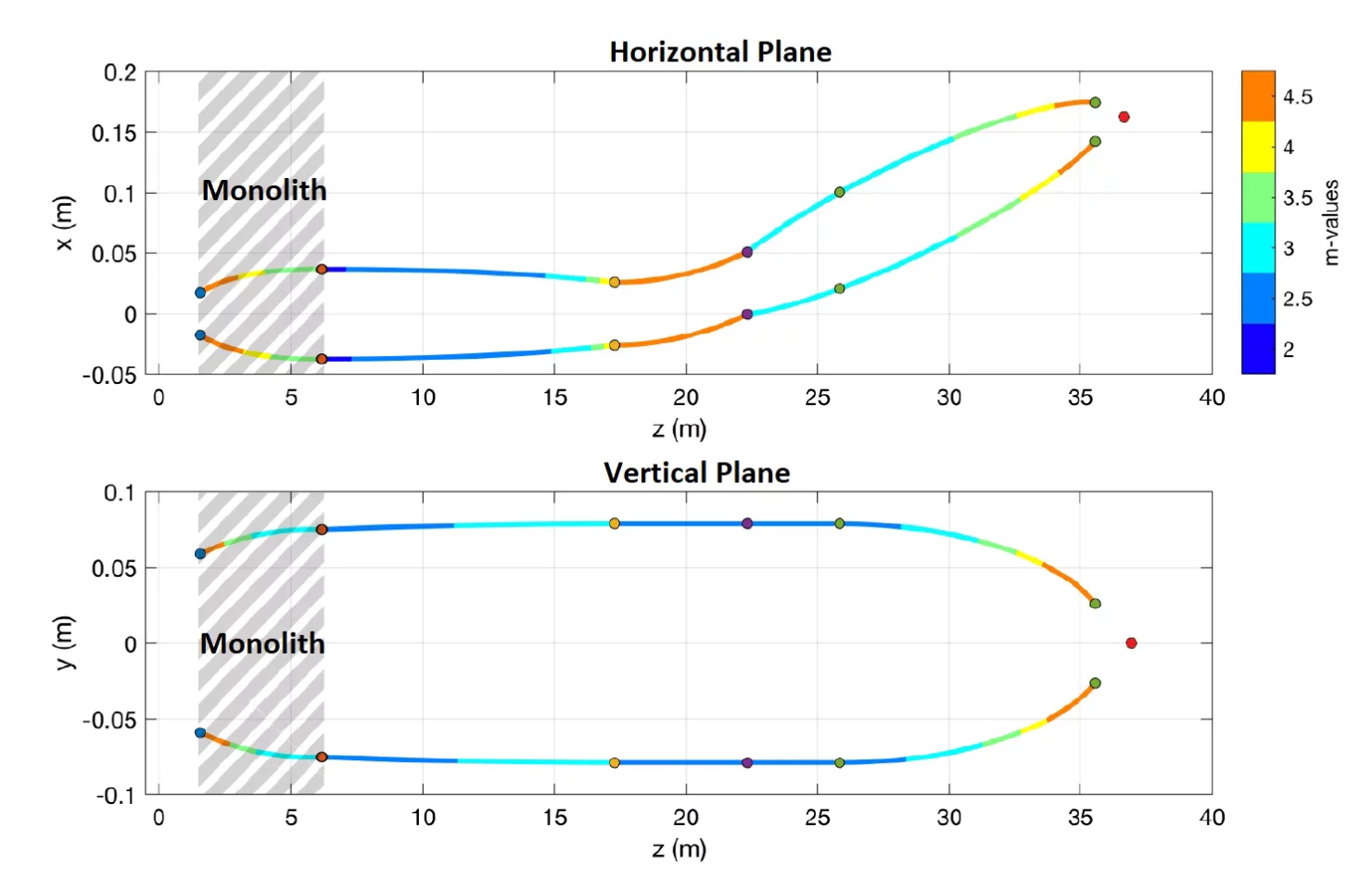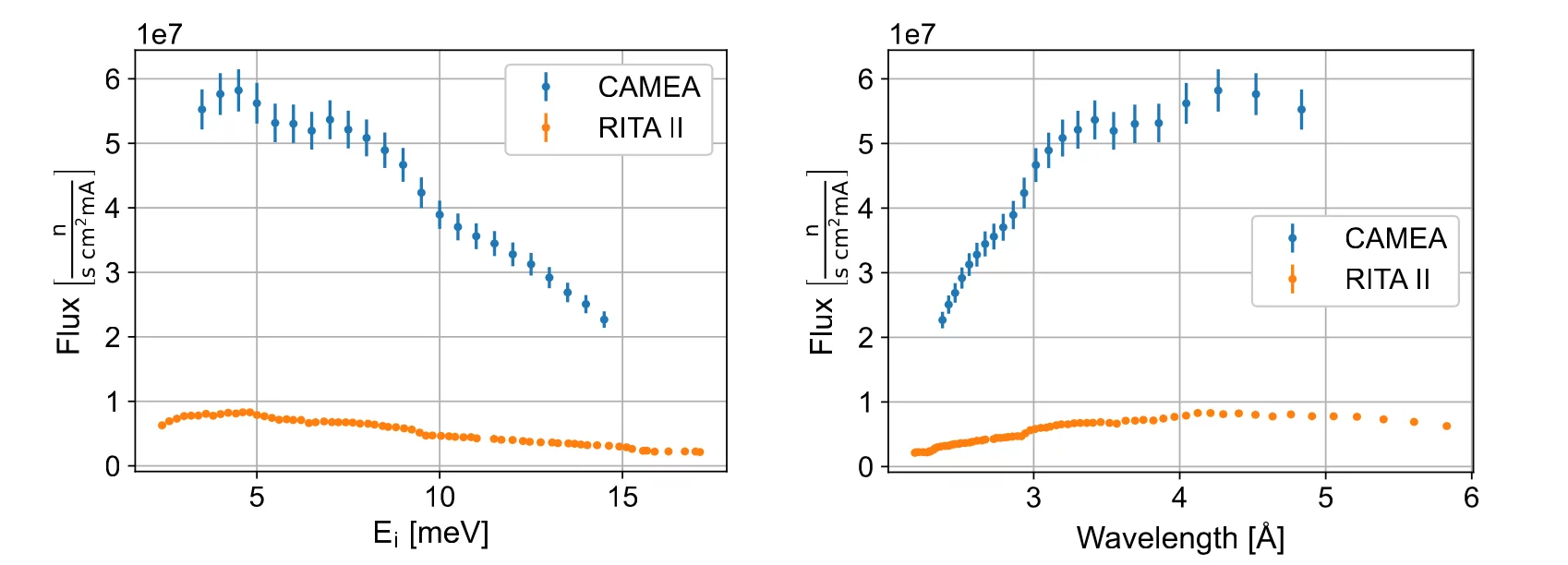CAMEA occupies the end position of the neutron guide 1RNR13 that has has been upgraded in 2019-2020.
The guide is otimized for neutrons in the wavelength range from 2.2-5 Å, accepting a large horizontal divergence of ±2◦. This is achieved through a double elliptical guide profile with m-vaues up to 4.5.
The CAMEA monochromator consists of 187 individual 15 x 15 x 2 mm3 highly ordered pyrolytic graphite (HOPG) single crystals with a mosaicity of 0.6◦ to 0.8◦. They are arranged in 11 rows and 17 columns, respectively, spanning at otal size of 173 x 262 mm2 (including the gaps between the individual crystals). The crystals were mounted on 2 mm thick B4C pieces to reduce parasitic background contributions. The mechanical design of the monochromator allows to focus the beam in vertical (radius of curvature of>0.6 m) and horizontal (radius of curvature>1.3 m) direction by a rotation of the individual graphite crystals. An optimally focused monochromator results in a beam spot of 23 x 32 mm2 (full-width at half maximum (FWHM) intensity) at the sample position.
The flux increase compared to a flat monochromator is 2.55 and 1.5 when the monochromator is focused vertically and horizontally, respectively. The figure on the right shows the measured neutron flux at the sample position (area of 10 x 10 mm2) normalized to 1 mA on the SINQ target as function of energy and wavelength for a double focused monochromator. The current performance of the primary spectrometer is compared to the replaced primary spectrometer RITA II.
The multiplexing secondary spectrometer consists of 8 analyzer units with 8 serially connected analyzers of final energies between 3.2 and 5 meV. Thus, for every incident energies CAMEA covers an energy bandwidth of 2 meV over an angular range of 60 degrees. CAMEA allows for an efficient mapping of horizontally scattered low-energy neutrons under extreme conditions down to T = 30 mK that can be combined with magnetic fields up to μ0H = 15 T and/or high pressure options.
We refer to further in formation in this article
Datasheet
| Overview | |
|---|---|
| Distance cold source - CAMEA | 42 m |
| Monochromator scattering angle | 39.4° < 2θM < 128° |
| Neutron energy (PG 002) | 2.2 meV < Ei < 16 meV 5.7 Å > λi > 2.26 Å 1.1 Å-1 < ki < 2.78 Å-1 |
| Sample Scattering Angle | 2θS ~< 110° |
| Sample environment | maximum load 500 kg |
| Collimation after sample | 60' |
| Detector | 104 Position Sensitive 3He Detectors |
| Filters | cooled Be |




